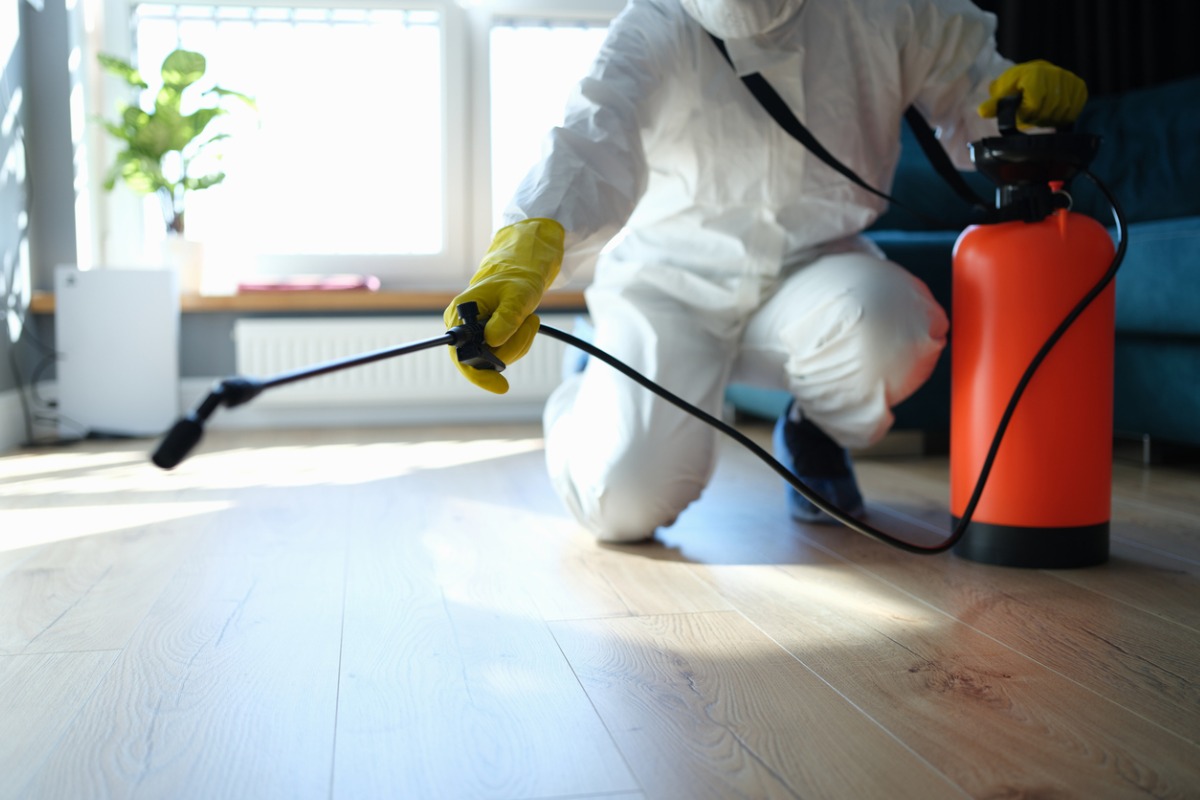Exploring Problem and Therapy Techniques on the planet of Bug Control
The landscape of bug control incorporates a myriad of challenges, especially as problems of usual household insects proceed to advance. By integrating precautionary procedures with innovative monitoring techniques, such as Integrated Insect Administration (IPM), home owners can much better safeguard their environments.

Usual Household Pests
When it pertains to handling our space, understanding common home insects is vital. These parasites not just interrupt our convenience yet can additionally posture health risks and damage home. One of the most common family bugs consist of ants, cockroaches, rats, termites, and bed insects.
Ants, usually seen foraging in kitchen areas, can pollute food and establish huge swarms. Rodents, consisting of computer mice and rats, can cause structural damage and carry diseases like hantavirus and salmonella.
Recognizing the indicators of these bugs, such as droppings, nests, or bite marks, is essential for very early intervention (Pest Control Lockhart). Correct cleanliness practices, securing entry factors, and keeping a clutter-free atmosphere are effective preventative procedures. By identifying these usual home parasites and comprehending their behaviors, house owners can take proactive actions to mitigate invasions, ensuring a much healthier living environment
Comprehending Parasite Infestations
Insect problems can escalate swiftly, turning a minor aggravation into a substantial problem if not resolved quickly. Recognizing the nature of these infestations is important for reliable management. Bugs can attack residential and industrial rooms for various reasons, including the look for food, sanctuary, or breeding grounds. Typical aspects adding to infestations include bad hygiene, architectural vulnerabilities, and seasonal modifications that drive bugs inside.
Recognizing the kind of pest is important, as different species exhibit varied behaviors and reproductive prices. As an example, rats might develop nests in covert areas while bugs like cockroaches thrive in damp environments. Early detection often pivots on identifying indications such as droppings, chomp marks, or unusual sounds, which can show a trouble prior to it becomes serious.
Environmental problems additionally play a crucial function in insect proliferation. Cozy, damp climates can facilitate the quick growth of insect populations, while adjustments in landscape design or building and construction can unintentionally create conducive settings. As a result, regular inspections and preventative procedures are extremely important to mitigating the risk of problems. An informed strategy to comprehending these dynamics prepares for reliable insect monitoring techniques in the future.
Therapy Methods and Methods
Reliable therapy methods and methods are essential for reducing bug problems and restoring a risk-free setting. A complex approach is typically best, including chemical, organic, and mechanical strategies tailored to the particular bug and the extent of the problem.
Chemical treatments include using insecticides and herbicides, which can efficiently get rid of bugs. Nonetheless, correct application and adherence to safety guidelines other are essential to reduce dangers to people and non-target organisms. Integrated Insect Management (IPM) encourages the judicious use of chemicals as a last resource, relying rather on surveillance and limit degrees to identify intervention needs.
Organic control techniques involve presenting all-natural predators or bloodsuckers to decrease pest populaces. This method is increasingly preferred, especially in farming setups, as it promotes ecological sustainability.
Mechanical methods, such as catches and barriers, give instant relief from parasites without introducing chemicals. read review Alternatives include sticky catches for bugs or physical obstacles for rodents.
Ultimately, the option of therapy technique should think about the specific bug, the atmosphere, and possible influence on human wellness and environments. A balanced mix of these strategies can successfully take care of infestations while advertising long-term insect control remedies.
Preventive Procedures for Homes
Proactively attending to parasite issues prior to they rise is vital for preserving a healthy and balanced home environment (Pest Control Lockhart). Carrying out reliable preventive actions can substantially decrease the chance of infestations, eventually guarding both your residential property and health

Appropriate landscaping also plays a vital function in avoidance. Keeping bushes and trees trimmed away from the home decreases the chances of insects finding their way indoors. Furthermore, ensure that drainage systems are operating successfully to stop standing water, which can reel in insects and other insects.
Finally, routine inspections are advisable. Regularly examining for indications of insect activity permits for early intervention. By taking on these precautionary steps, homeowners can develop an atmosphere that is less friendly to bugs, thereby boosting their general quality of life and lowering the requirement for extensive bug control interventions.
Business Insect Control Strategies
A detailed approach to business insect control is crucial for services aiming to preserve a safe and find out this here hygienic setting. Efficient approaches include a mix of regular assessments, employee training, and the application of Integrated Pest Administration (IPM) techniques.
Regular assessments enable early discovery of pest activity, permitting prompt intervention. Services need to develop a regular timetable for these assessments, concentrating on risky locations such as kitchens, storeroom, and garbage disposal sites. Worker training is just as crucial; personnel must be enlightened on the signs of insect problems and the importance of reporting them right away.
Applying IPM techniques helps reduce bug concerns sustainably. This consists of habitat modification, such as sealing entrance factors and minimizing mess, along with using all-natural deterrents before resorting to chemical treatments.

Additionally, teaming up with a licensed insect control provider ensures access to specialist expertise and advanced therapy choices. This partnership can lead to customized insect control prepares tailored to the particular needs of business, reducing risks and enhancing total efficiency. Eventually, a positive and educated approach fosters a pest-free setting, guarding both public health and wellness and company credibility.
Conclusion
In conclusion, efficient parasite control requires a thorough understanding of common house insects and their habits, coupled with targeted treatment approaches. Implementing precautionary measures together with therapy strategies such as Integrated Insect Monitoring and biological control enhances the capability to minimize infestations.